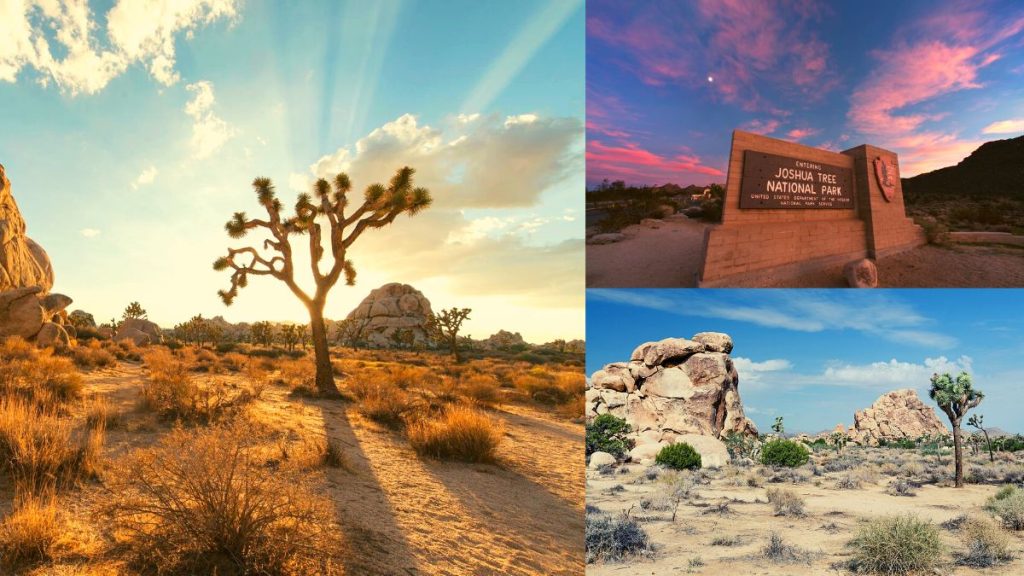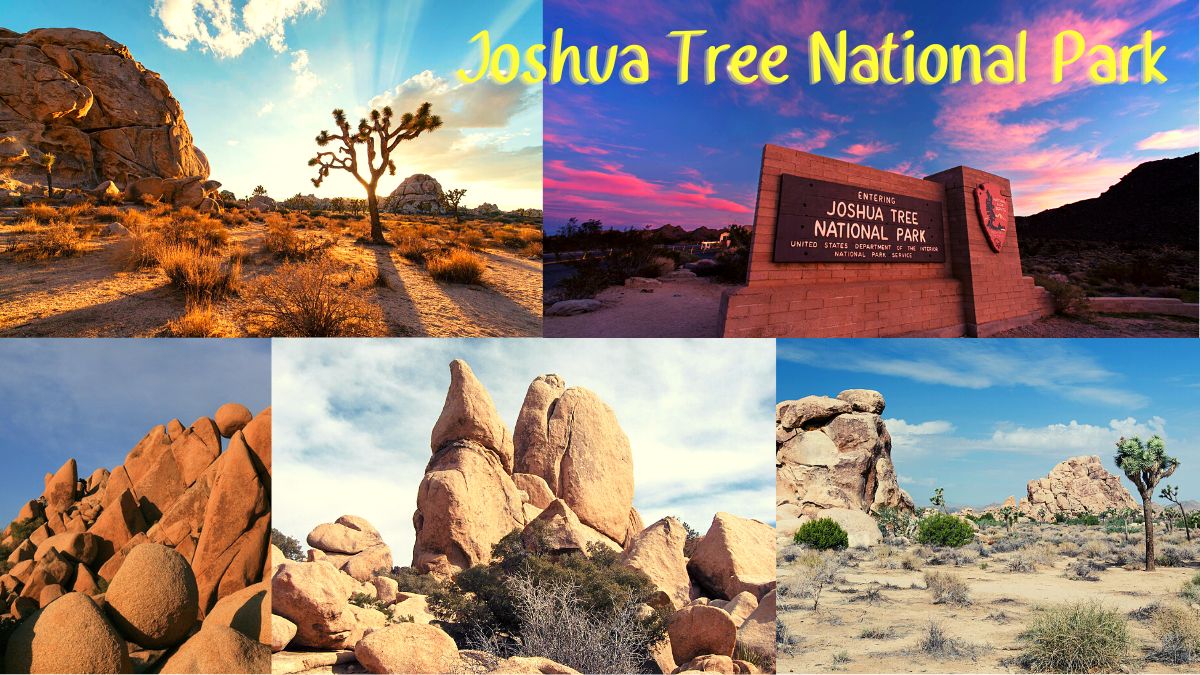Another fact about the Joshua tree is that it is not a tree at all. They are actually a species of yucca that belongs to the same subfamily as orchids and flowering plants. Joshua plants only grow 1 to 3 inches each year, giving them a long lifespan (about 150 years). This plant grows mainly in the Mojave Desert, but can also be found in the Sonoran Desert.
Today in this article we hope to give you facts about Joshua Tree National Park in California. So, let’s look.
1. Joshua Tree is made up of three distinct ecosystems
Joshua Tree National Park shares parts of three different ecosystems. The southern side of the park is part of the Colorado Desert. Ocotillo plants and Chola cactus are characteristic of this part of Joshua Tree. On the west side, the San Bernardino Mountains are home to juniper and California pine trees. The north is formed by the southern border of the Mojave Desert. This is where you can see the famous Joshua Tree, for which the national park is named. The diversity of Joshua Tree makes it an interesting park for camping and weekend stays.
2. Joshua Tree National Park is home to 57 species of mammals
Don’t let Joshua Terry’s naked looks fool you. In fact, this national park is home to 57 species of mammals, 46 species of reptiles, 250 species of birds and 75 species of butterflies. Coyotes roam as well as large mammals such as bighorn sheep. Animals that thrive in Joshua trees include gophers, kangaroo rats, jackrabbits, and round-tailed ground squirrels. Bighorn sheep, mountain lions and bobcats are also seen in this park.

3. Humans have been living in this park for more than 4000 years
The first inhabitants of the land we now call Joshua Tree National Park lived there between 4,000 and 8,000 years ago. They were followed by Serrano and after them by Kemhuwi from the indigenous people of Kawila. Miners and ranchers arrived in the 19th century. In the 1900s, settlers who occupied these lands dug wells, planted crops, and built shacks.
Joshua Tree National Park, named for the short, exotic trees found throughout the park, offers natural beauty and exotic history. This vast desert landscape has attracted Mormon pioneers, ranchers, thieves, adventurers and nature lovers for years.
Most Southern Californians can reach the park in just 1-3 hours, making it a popular weekend destination. But with more than 100 miles of hiking trails, numerous crags for rock climbing and climbing, and some of the world’s best stargazing spots, it’s a worthwhile destination for out-of-state and international visitors.
4. A great place to see the stars
Joshua Tree has been designated an International Dark Sky Park by the International Dark Sky Association and offers excellent opportunities for stargazing and the Milky Way. Most people live in urban areas full of artificial light, which makes it difficult to see the stars. By dramatically limiting artificial light after sunset, the Joshua tree allowed millions of stars to be seen on a clear night.
The National Park Service offers several tips for enjoying the night sky. If you find a good vantage point, please be patient. It takes up to 20 minutes for the human eye to adjust to low light and see all the stars in the sky. Also, avoid using bright white lights such as flashlights or cell phone lights. Instead, carry a red light or cover a household flashlight with red cellophane.
5. This is world class rock climbing
A rock climber’s paradise, Joshua Tree is located there. There are 8,000 routes for hiking. At the visitor center, you may purchase climbing guides. Beginners can also arrange climbing instructors through local equipment stores. Make sure your instructor is properly licensed in the park.
More on Animesonnet.com: The Most Famous Yellowstone National Park, Wyoming, Here
6. This route offers stunning desert scenery
With more than 100 miles of hiking trails, Joshua Tree National Park is remarkably popular with local hikers. First-time visitors should choose the routes with the best views: Mount Ryan and Keys View.
7. This area has a history of settlement
For 60 years, Bill and Frances Keyes raised their children, herded cattle and mined in this desert. Their former home, school, and workshop still exist and are now listed on the National Register of Historic Places. From October through May, you can book ranger-guided tours of Keys Rush. The tour lasts 90 minutes and provides an in-depth look at the hard life of the desert dwellers.

8. There are great photo opportunities
Joshua Terry is well known to photographers. The unique cliffs, magnificent scenery and starry skies provide photo opportunities for Instagrammers and professionals alike.
Two of the most photographed rock formations are Skull Rock and Heart Rock. Skull Rock can be seen along the 1.8 mile long Skull Rock Nature Trail. Heart Rock is part of the Arch Rock Nature Trail, which is only half a mile long.
For experienced night photographers, the park is an ideal place to capture starry skies and moonlight. Amateurs looking to improve their skills should consider scheduling weekend workshops.
9. Wildflowers are magnificent
Although the desert may seem to have limited vegetation, there are actually 700 plant species in the park. From February to May, colorful wildflowers bloom throughout Joshua Tree National Park. Flowers begin to bloom at lower elevations in February and may be seen at higher elevations in June. The extent and location of blooms can change from year to year depending on the weather, so do your research before visiting the park to see the flowers.
10. You can enjoy great bird watching
Avid bird watchers will also appreciate the Joshua Tree and its 250 species of birds. Some birds call the park home, while others pass through only once a year. Some even nest in this desert landscape.
Cottonwood Springs, Mara Oasis and 49 Palms Oasis are three ideal places for bird watching. The park website provides an overview of the birds you can see and the best times to see them.

